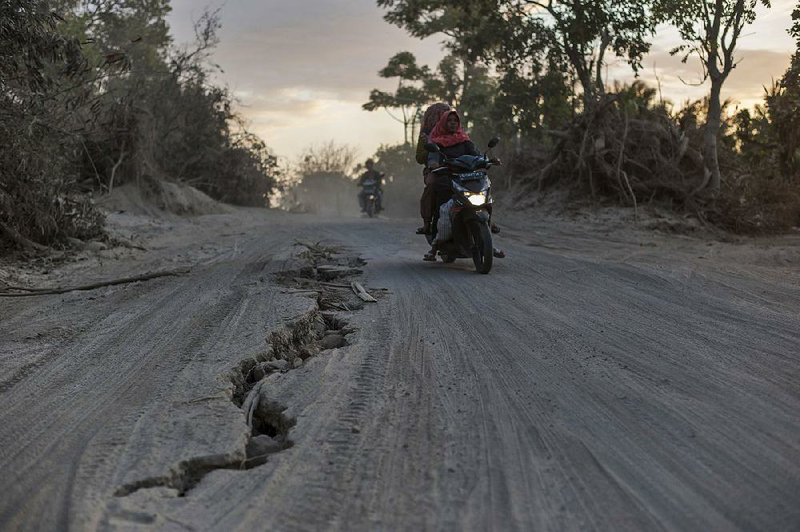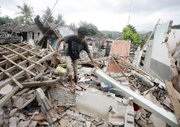TANJUNG, Indonesia -- Scientists say the powerful Indonesian earthquake that killed nearly 400 people lifted the island it struck by as much as 10 inches.
The National Disaster Mitigation Agency said on Saturday that 387 people died, increasing from the 321 it reported the previous day, as search and rescue teams continued to sift through the rubble and people already buried by relatives are accounted for.
Using satellite images of Lombok from the days following the Aug. 5 quake, scientists from NASA and the California Institute of Technology's joint rapid imaging project made a ground deformation map and measured changes in the island's surface.
In the northwest of the island near the epicenter, the rupturing fault line lifted the earth by 10 inches. In other places it dropped by 2-6 inches.
NASA said satellite observations can help authorities respond to earthquakes and other natural or manmade disasters.
Almost 390,000 people, about 10 percent of Lombok's population, are homeless or displaced after the earthquake, which damaged and destroyed about 68,000 homes.
Disaster agency spokesman Sutopo Purwo Nugroho said three districts in the north of Lombok still haven't received any assistance. The governor of West Nusa Tenggara province, which includes Lombok, has extended the official emergency period by two weeks to Aug. 25.
"It's estimated the death toll will continue to grow because there are still victims who are suspected of being buried by landslides and collapsed buildings and there are deaths that have not been recorded," Nugroho said.
The number of evacuees fluctuates, he said, because not all evacuee points have been counted and some people tend to their gardens and properties during the day and return to the tent camps at night. Some people don't need to evacuate because their homes aren't damaged but have gone to refugee centers because they feel traumatized.
Nearly a week since the 7.0 quake, Lombok is still reeling, but glimmers of normality were returning for some. Devout villagers are making plans for temporary replacements of mosques that were flattened.
In Tanjung, one of the worst affected districts in the hard-hit north, a food market opened Saturday and locals bought vegetables and fish. Some shops also opened for business despite being in damaged buildings.
"I had to borrow money from someone to buy morning glory to be resold here," said Natbudi, one of the market vendors. "If I just stay at the camp and don't come here to sell then I don't have money to buy rice."
Lombok, a popular and less developed tourist destination than neighboring Bali, was hit by three strong quakes in little over a week and has endured more than 500 aftershocks.
A July 29 quake killed 16 people. An aftershock measuring magnitude 5.9 on Thursday caused panic, more damage and more than two dozen injuries.
Villager Sunarto, buying fish at the makeshift market, said it was a relief to do something ordinary.
"I feel happy and thank God that finally the market is open," he said. "We can buy our needs while waiting for the situation to get back to normal even though we're still worried."
A Section on 08/12/2018

